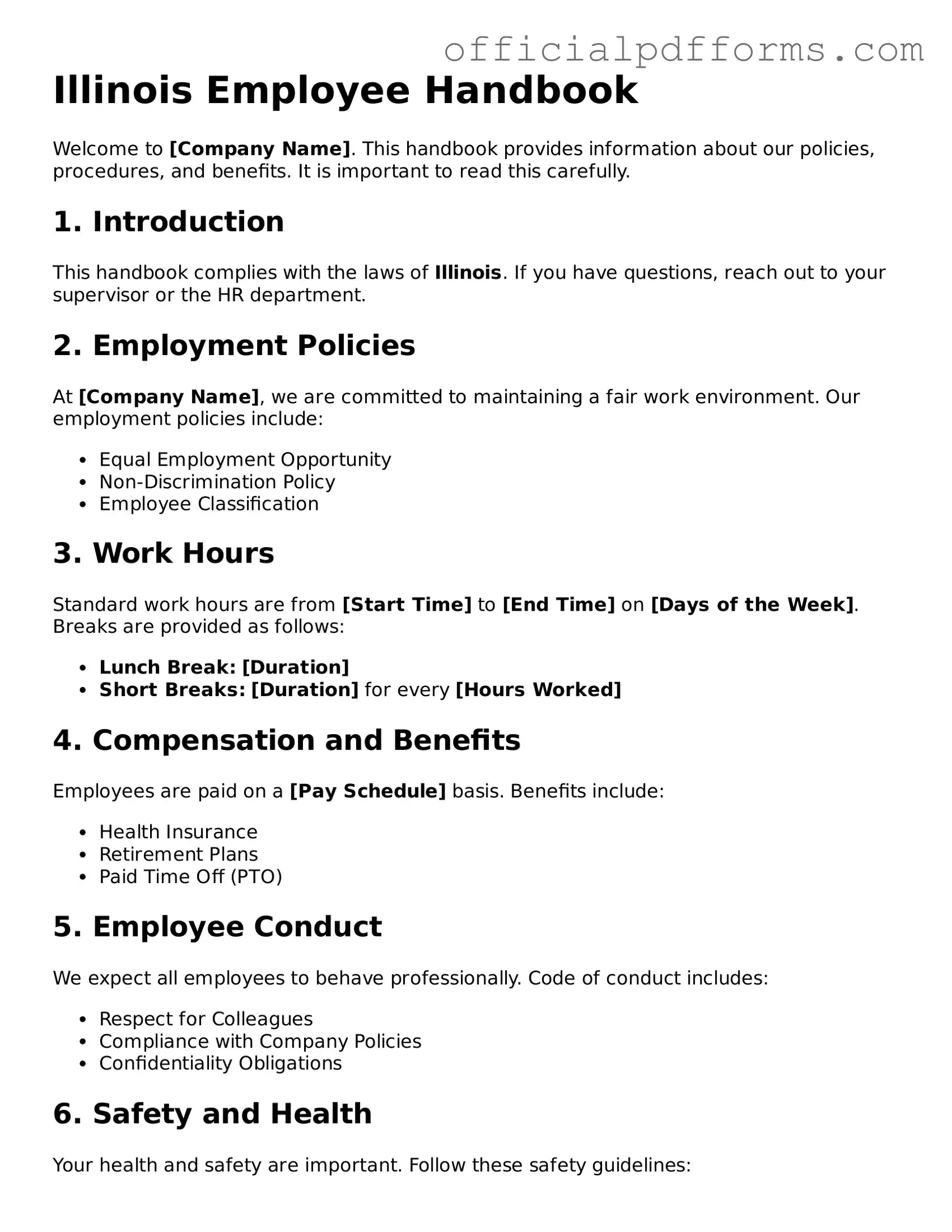Printable Illinois Employee Handbook Template
The Illinois Employee Handbook form is a crucial document that outlines the rights, responsibilities, and policies of both employers and employees within the state. It serves as a guide for workplace expectations and helps ensure compliance with state laws. To get started on creating or updating your employee handbook, fill out the form by clicking the button below.
Access Form Online
